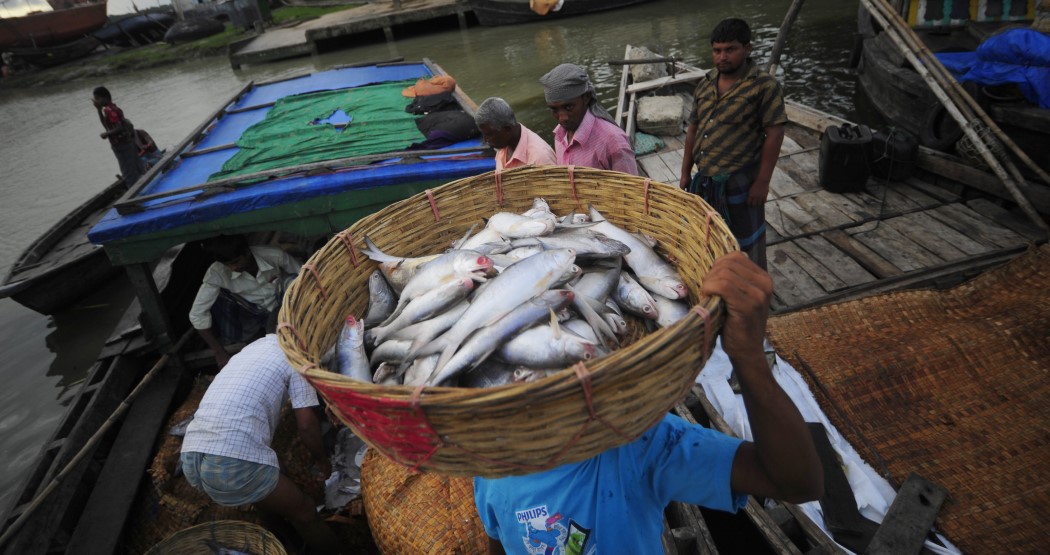
Sri Lanka is endowed with an enormous stock of fishing resources - almost incalculable - thanks to its territorial waters covering an expanse of 21,500sq. km., the UN-Mandated Exclusive Economic Zone of 517 000sq.km., 260 000ha of freshwater bodies, 158 000ha of lagoons & estuaries, 71 000ha of mangrove zones, mudflats & salt marshes, and the growing aquaculture industry of the country. Sri Lanka’s total marine fish catch amounted to 415,490Mt (242,580Mt of coastal fish catch and 172,910Mt of Offshore and Deep-Sea fish catch). The inland and aquaculture fish production in 2019 was 90,340Mt. The total export volume of seafood and fishery products was 28,771Mt which brought in US$81.3 million in foreign exchange earnings.
The fisheries sector plays a pivotal role in Sri Lanka's social and economic life. It’s a major industry with its own culture, tradition and vernacular and provides livelihood to a massive population who live along the littoral from all sides. Some 2.4 million people are directly and indirectly employed in this sector. The major stakeholders are fishermen, breeders, processors, logistics, cold chain, packing and other service suppliers. There are more than 75 medium and large-scale companies engaged in exporting seafood with 32 companies operating EU Approved processing plants.
According to the Industry Capability Report prepared and published by EDB in December 2019, there are 26,600 fishing boats in the sector including:
Apart from these, the industry possesses notable infrastructural strength in the following:
A variety of vessels with different sizes and capabilities are used by the local fishers for coastal, deep-sea, and inland fishing.
All high sea boats now comply with the legal and international standards such as active VMS units on all 1,600 high seas registered Sri Lankan fishing vessels, international call signs, proper gear markings, legal fishing gears, logbooks & other requirements mentioned in the high sea operation regulations.

Sri Lanka is ranked amongst the first 50 countries in the world exports with a total share of 0.2% in the world export market. Sri Lankan seafood such as Tuna, Prawn, and Crab is known for its unique taste and texture, which may owe largely to the unique climatic conditions and the peculiar ecosystem of the Sri Lankan waters. Due to this, buyers, who're accustomed to their unique flavours of Sri Lankan seafood, may prefer to keep sourcing seafood from Sri Lanka to maintain the consistency of the taste, which is an essential condition to be met in the production of premium seafood products. Also, important, Sri Lanka, being an island, can catch fish all year round, so the overall production, except for select products like lobsters, remains consistent throughout the year.
Sri Lanka has established a new Vessel Monitoring System (VMS) to monitor the deep-sea fishing fleet, as it was a mandatory requirement for the removal of the EU fish ban. This new technology is a requirement for the sustainable management of the island's fisheries industry and the implementation of the global concept of the VMS, which has become mandatory.
Now Sri Lanka has implemented the fishery improvement project (FIP) for Sri Lankan longline tuna and billfish (LT&B) and Blue Swimmer Crabs which will help promote Sri Lankan seafood as sustainably sourced seafood.
The total extent of lagoons and estuaries has been estimated to be 158 000ha. Adjoining these estuaries and lagoons are an extensive area of low-laying delta lands estimated at 70,000 hectares. This area lends itself to aquaculture farms. That apart, the following measures can be adopted to expand the fisheries industry further.
Major Varieties of Freshwater Fish
The National Institute of Fisheries and Nautical Engineering (NIFNE), established in 1999, offers training programmes both for those engaged in fisheries and for those who wish to enter the sector. It is also responsible for conducting seminars, symposia, research, surveys, and other investigations, and also for developing and maintaining links with other educational and training institutions in the field of nautical engineering.
There are some organizations dedicated to the development of the Fisheries industry in Sri Lanka, namely:
Several management tools have been introduced to regulate inland fisheries and aquaculture activities that include the following: